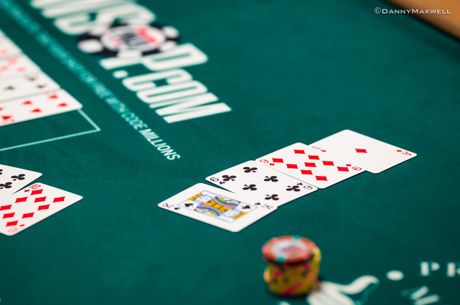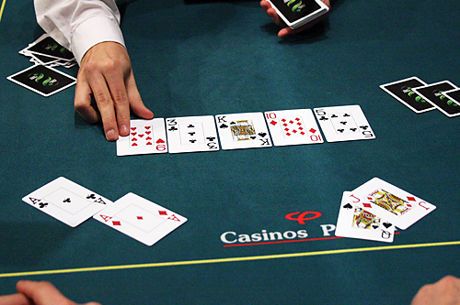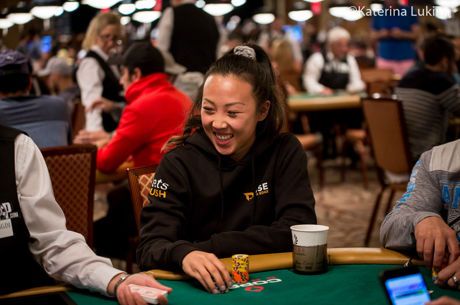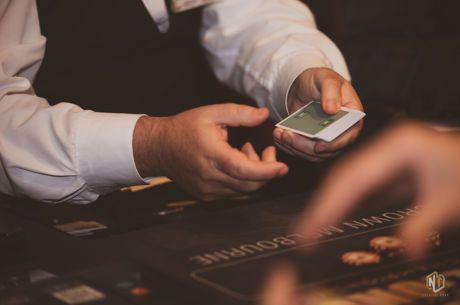Got a Poker Problem? Use the Scientific Method!
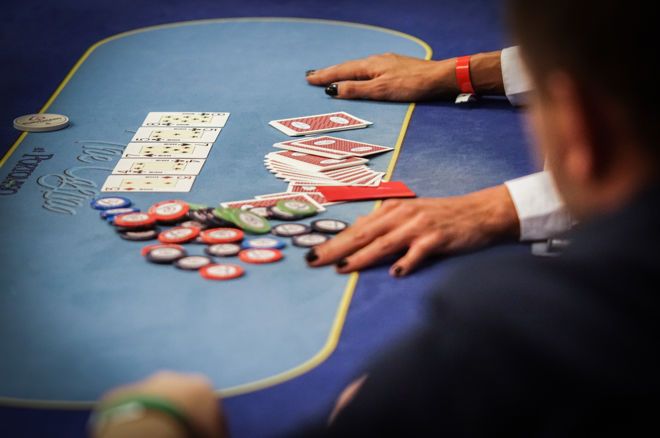
When I was a student in high school, I was required to do a science fair project each year. I absolutely hated it.
I could never come up with good ideas. One year, I asked if cold water would freeze faster than hot water.
The next, I asked if fresh water would freeze faster than salt water. I got horrible marks both times. I refused to even attempt it my senior year.
However, one thing I did learn from those Bunsen burner days was the scientific method.
It is very useful for tackling problems �� and boy do we encounter a lot of problems as poker players.
Recently, I decided to revisit my childhood and use this process to address the most frequent problem I face in small-stakes live games.
Following the steps of the scientific method, I'll begin by identifying what that problem is.
HOT: Pokerstars Team Pros Reveal Their Sunday Million Strategy Tips
Step #1: State the Problem
I started off playing online poker where the play is generally better compared to live games at the same stakes.
Once I transitioned to live poker, the first problem I encountered was the frequency with which hands went multi-way.
I would raise from early position, get a caller, and watch in disbelief as subsequent players casually flicked in calls while proclaiming that they were priced in.
I often saw flops five- or six-handed from out of position.
That problem then led to another one �� it is almost impossible to continuation bet when I missed.
Step #2: Gather Information
I decided to start tracking my results in these pots. When I completely whiffed, I would check-fold.
When I got a marginal piece of the flop, I would go ahead and make a continuation bet.
This bet was often called by two or three players which left me further confused as to what I should do on the turn if I did not improve.
When I flopped a monster, I would bet all three streets and usually get paid off by some guy calling me down with a draw or a marginal hand.
This was great, but��monsters do not come around that often.
I had to come up with a better way to play my more marginal hands from early position.
Step #3: Form a Hypothesis
I thought about which poker hands were hardest to play from early position in a multi-way pot.
The main culprits were medium pairs, AxKx-offsuit, and AxQx-offsuit. I asked myself the question (that is, I formed a hypothesis):
"What would happen if I just limped in instead of raising with these hands?"
I thought that maybe limping would allow me to see the flop more cheaply and I would not feel the need to fire a hopeless continuation bet when I flopped a marginal pair or draw.
It would also allow me to put other hands like small pairs and AxJx-offsuit back into my early position range.
Before, I would open-fold these hands because they miss the flop so often and do not make for good continuation betting hands in multiway pots.
QUIZ: Call or Raise With Big Draw vs. Three Opponents?
I viewed many of these marginal hands as speculative, anyway �� why not wait to build the pot after they hit?
I postulated that limping would make it much easier to play these hands from out of position in multi-way pots.
I decided to try it out.
Step #4: Test the Hypothesis
Let's continue.
Limped Pots
Medium pairs played really well in limped pots.
- If I flopped an overpair, I would bet and get value from top-pair hands and draws.
- If there were only one overcard and the flop checked around, I would bet small turn cards to get value from second-pair hands and draws.
- If I faced any resistance, I would fold.
By keeping the pot small preflop, I granted myself the license to be more selective about which hands I continued with post-flop.
Unsuited Broadway hands like AxKx, AxQx, and AxJx also played very well in limped pots.
Limping kept more of the dominated hands in the villains' ranges. In addition, I knew that they would have raised the limpers with many of the hands that had me dominated.
This made me very comfortable going for three streets of value when I flopped top pair.
Raised Pots
Of course, there were times when someone would raise us limpers preflop. This was ideal when I held a small-to-medium pocket pair.
- If the raiser was a tight player, I would just call to set off the "I'm priced in" cascade of calls. This gave me an unbeatable price to try and hit my set.
- If the raiser was loose-aggressive and a known "punish the limpers" type, I would reraise big with my medium pairs. Most times he would just fold.
Sometimes he would decide to flip for the dead money. Rarely was I up against a bigger pair, because his raising range was so wide.
I would also reraise with AxKx-offsuit against both player types.
This hand works especially well for this move because it significantly blocks the only hands that have it dominated.
Meanwhile, with AxQx-offsuit I would make a read-based decision, and I would usually just fold anything worse than that.
WANT TO PLAY? Check out the best mobile poker sites of 2020!
Step #5: Analyze the Data and Draw Conclusions
This strategy had several positive effects.
It solved my problem of being stuck in awkward spots out of position in multi-way pots.
I no longer felt confused post-flop.
I usually knew right away how I should proceed once I saw the flop. I only put money into the pot on favourable boards and if I had to abandon ship, I was able to do so without losing as much as I would have otherwise.
Also, this limping strategy allowed me to get a better price on my speculative hands.
Limping and then folding on a big ace-high flop with a medium pair was much cheaper than raising preflop and then folding in the same spot. The best example of this benefit was illustrated whenever a tight villain had a big pair behind me.
If I raised a medium pair in early position and got a few callers, the villain's three-bet would likely be too big for me to set mine. Limp-calling in this spot was much more feasible.
Step #6: Report the Findings
Discussing this approach with my coaches during poker training led me to further outside-of-the-box thinking.
I developed this strategy to improve my play with hands that were hard to play as the aggressor from out of position in multi-way pots.
My coaches suggested that I try it with better hands like suited Broadways and QQ+ as well.
Occasionally adding these hands to my early position limping range has improved my results dramatically. Whenever I am facing the rare small-stakes player who is observant enough to exploit my capped range, these hands provide some much-needed protection.
I have also discussed this strategy with my peers on discussion forums and am now presenting it here.
Reporting findings is a very important step in the scientific method because it allows for both confirmation and criticism which leads to corrections and eventually to consensus.
Conclusion
This limping strategy is not perfect.
It likely has no use in tougher games where you don't expect to get as many callers when you raise from early position.
I employ it because it allows me to use the multi-way nature of small-stakes games to my advantage.
When I become aware of new problems that arise from my use of this strategy, I will go back to the drawing board, form another hypothesis, then rinse, and repeat. That's the scientific way.


